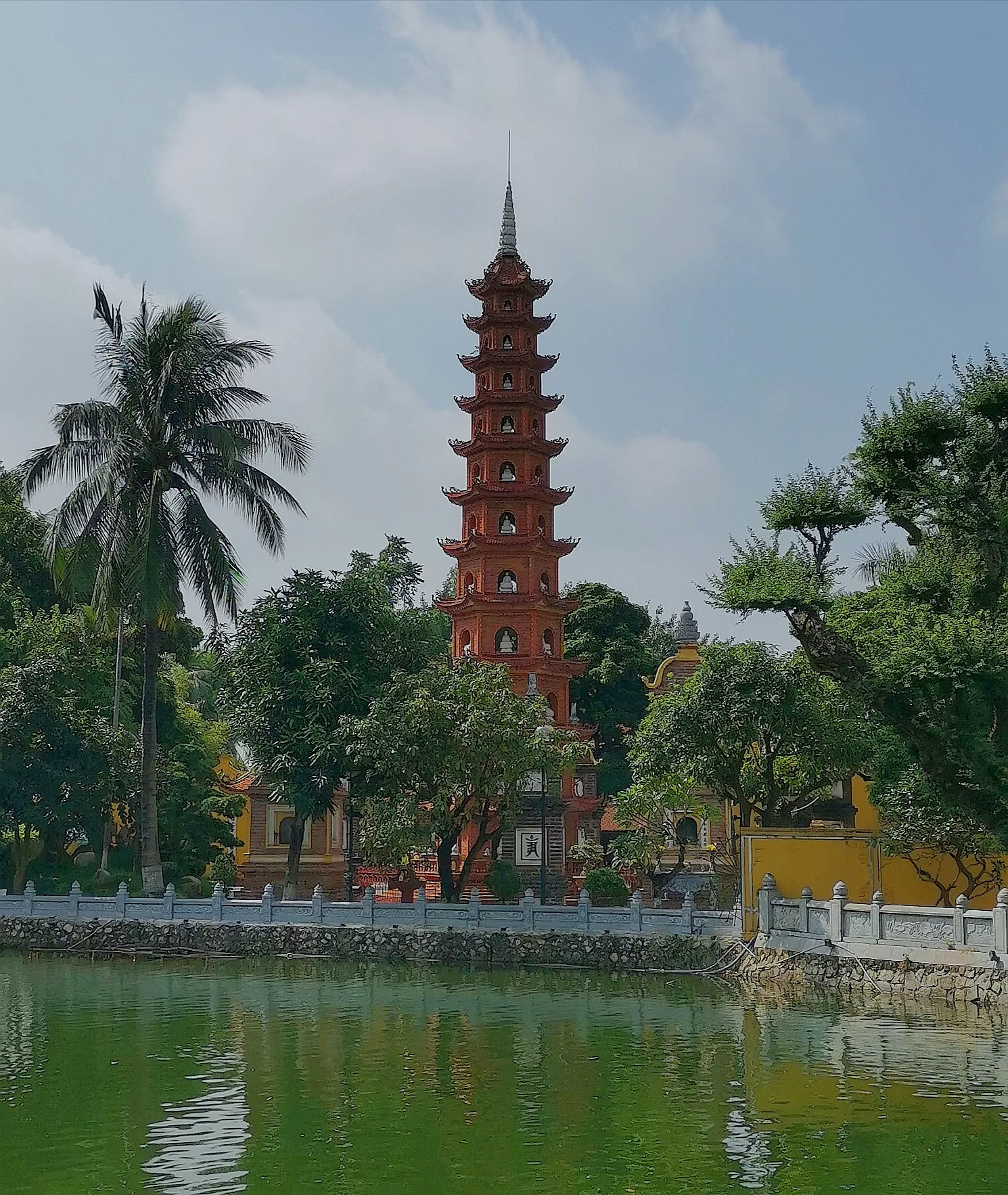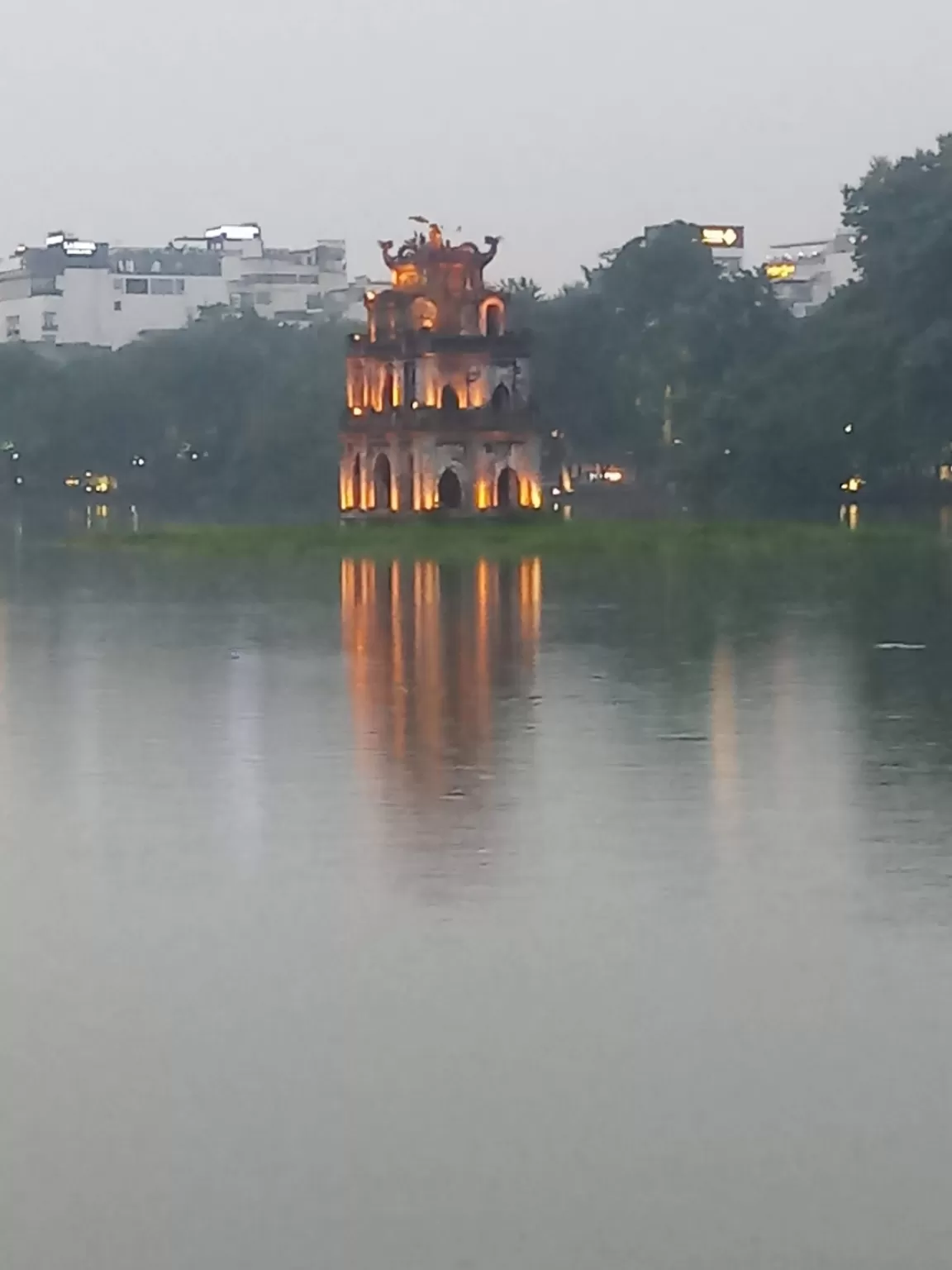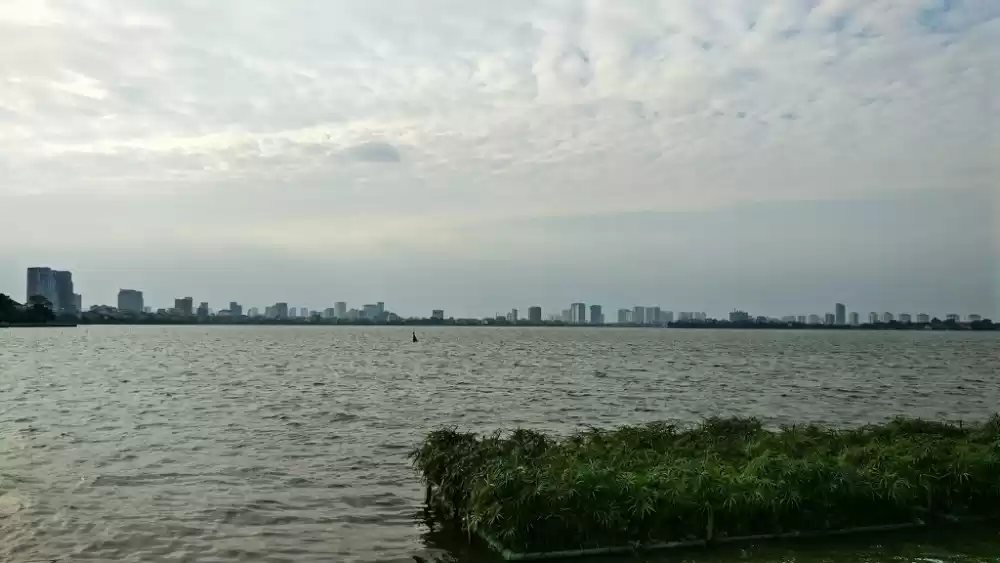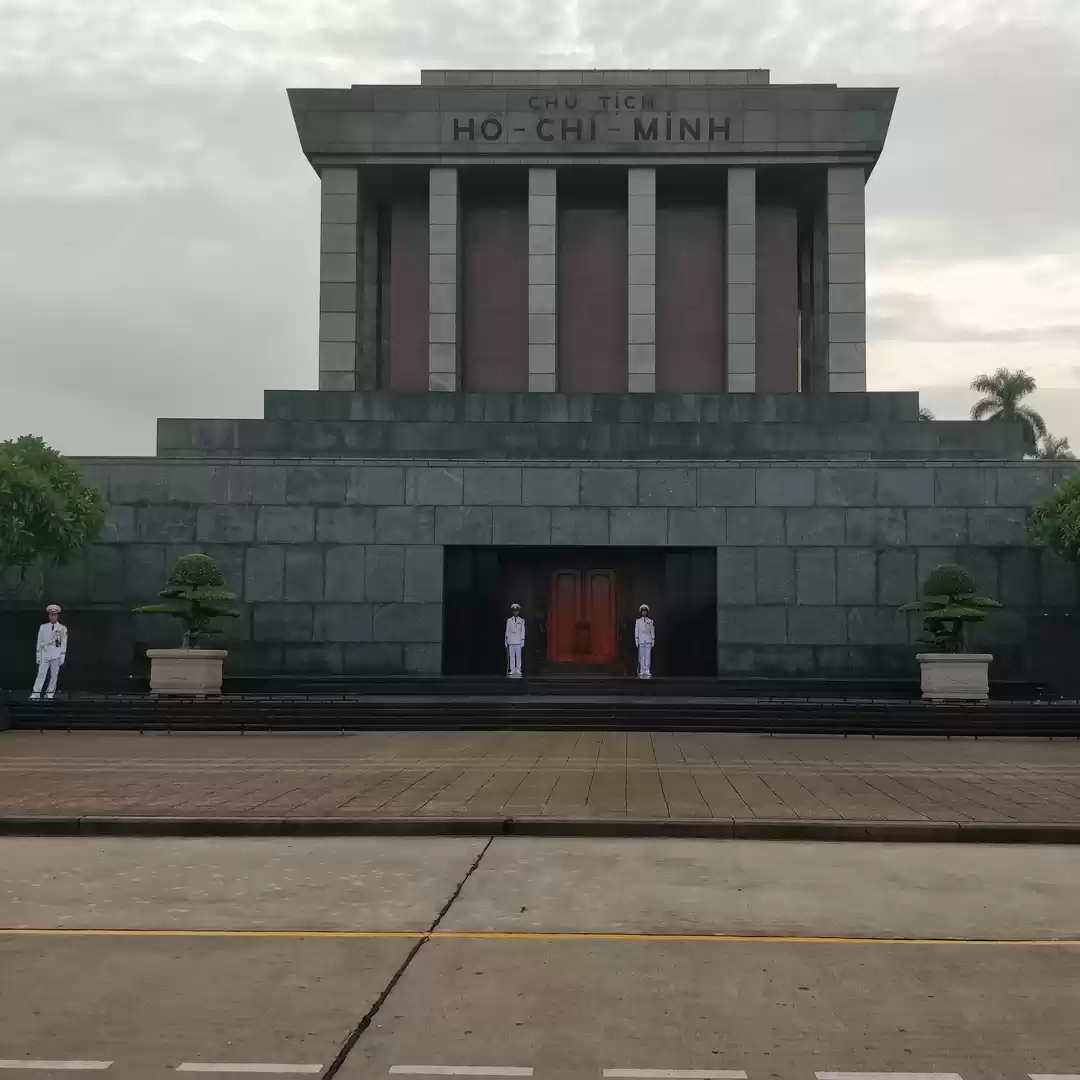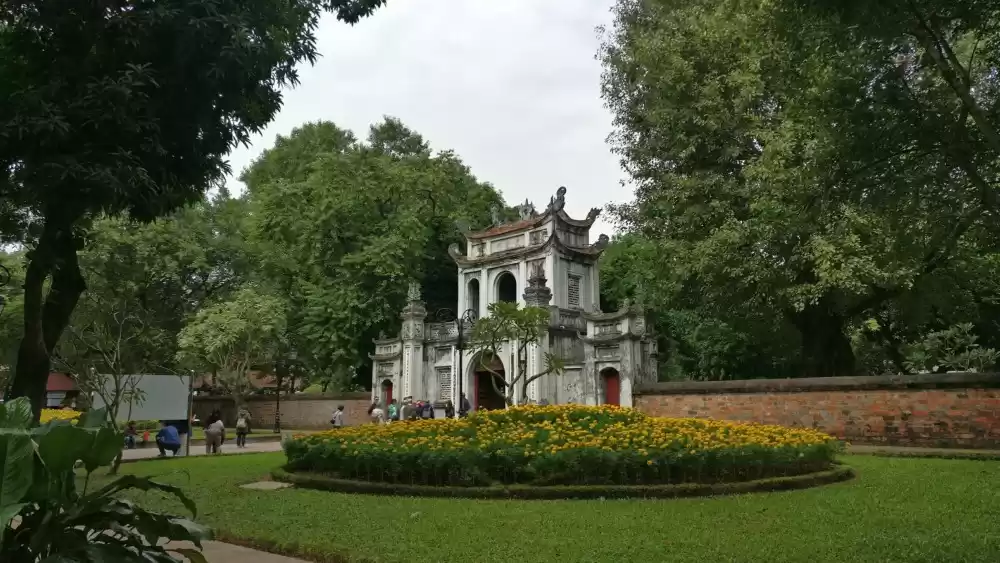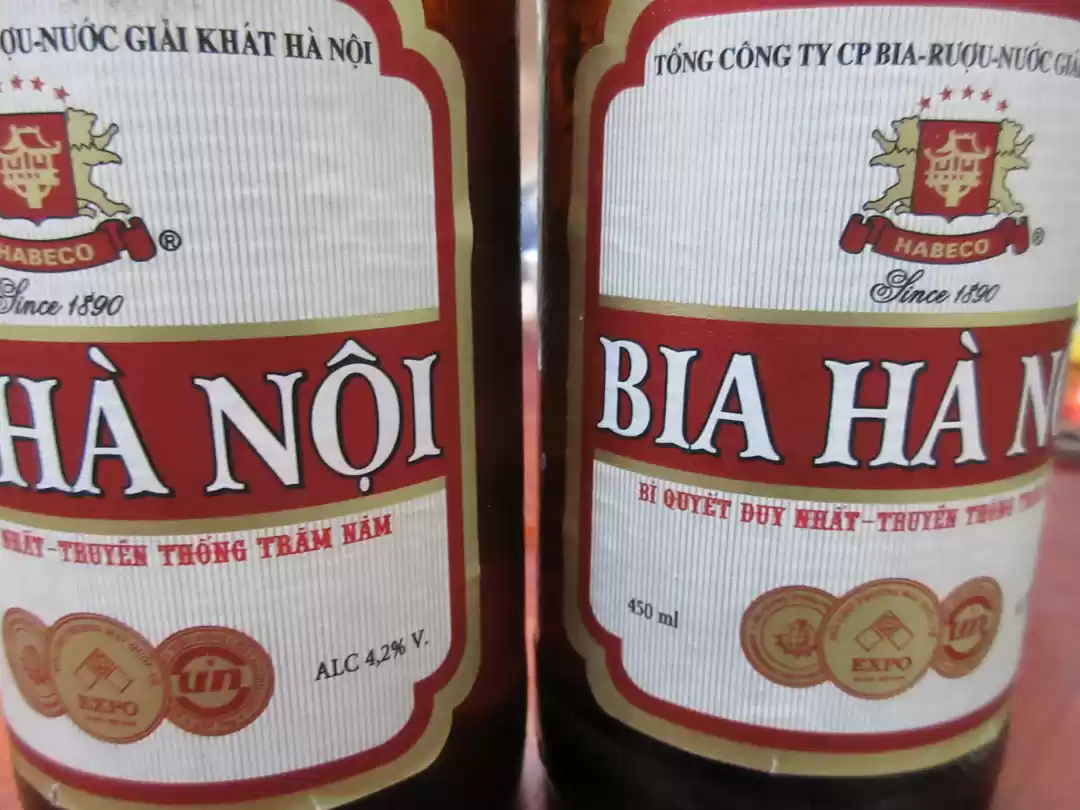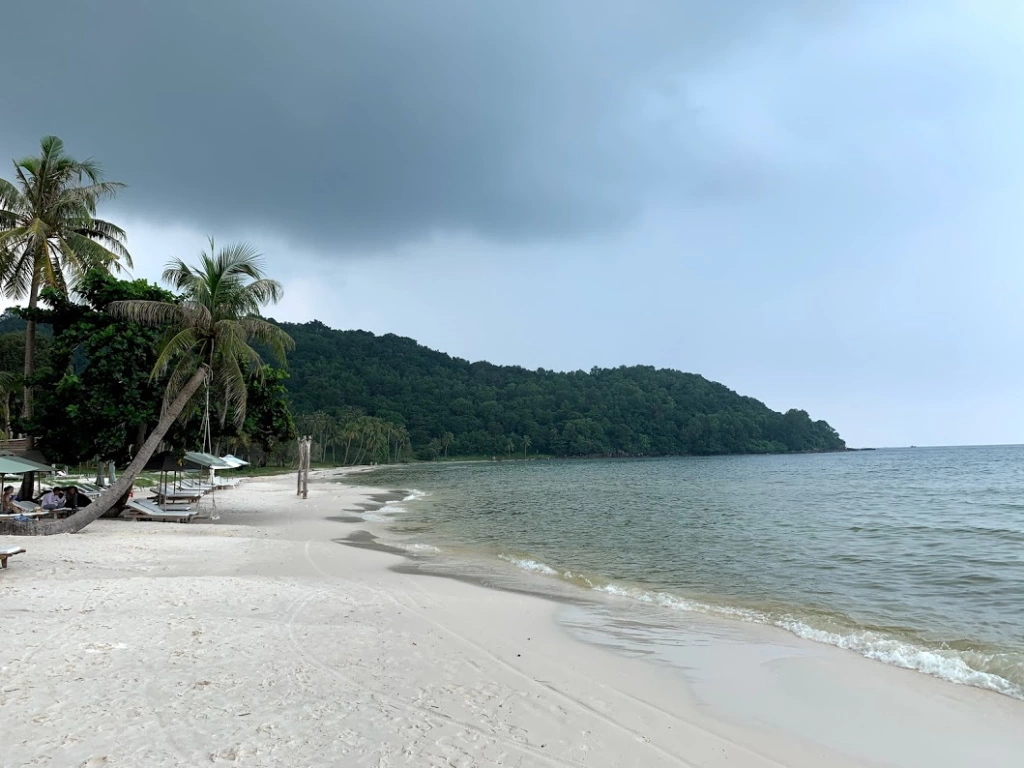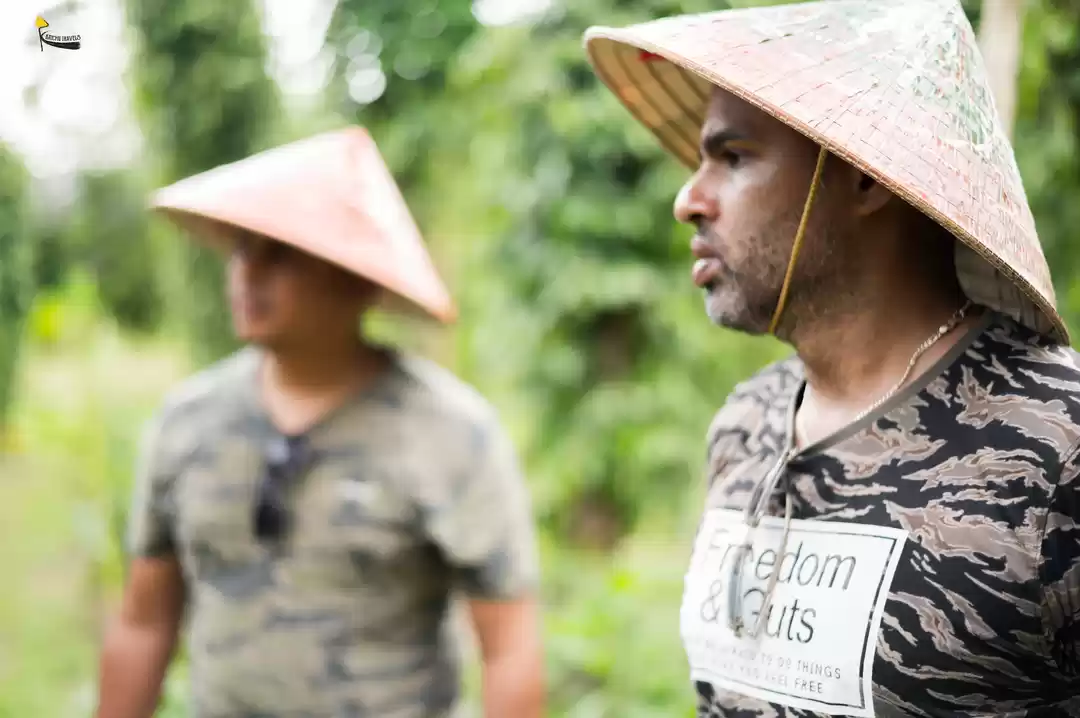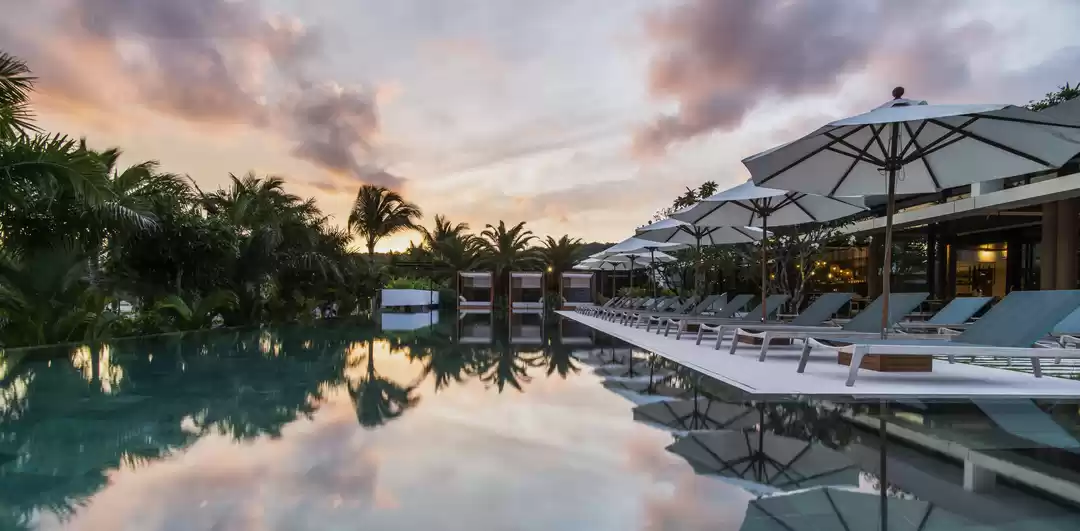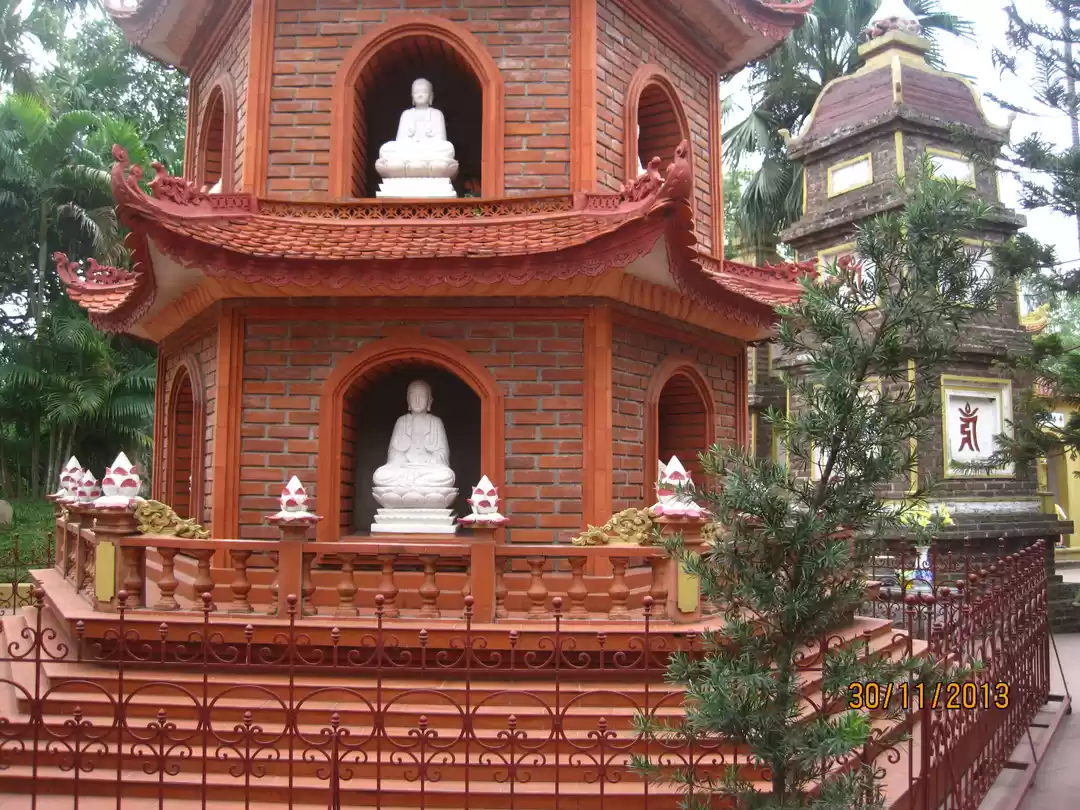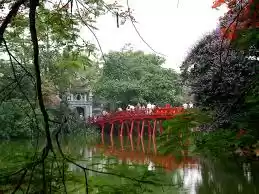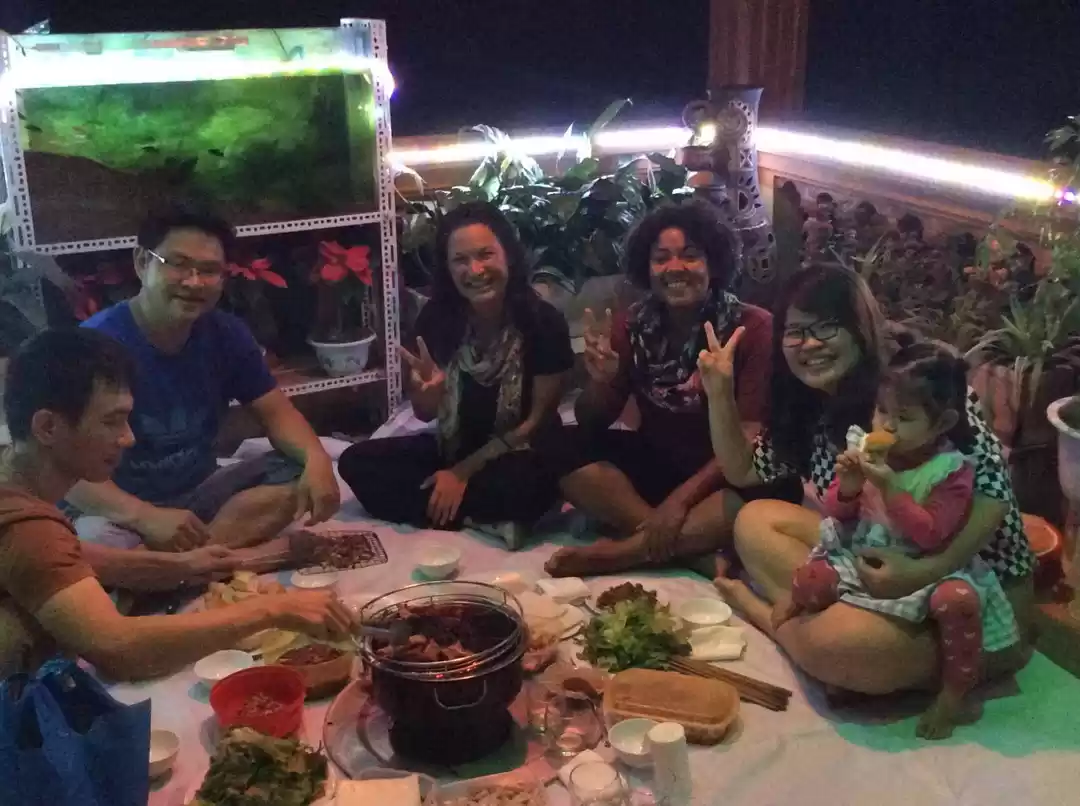Are you looking for a place to experience the history, culture, and religion of Vietnam in one stunning location? If so, then you should definitely visit Tran Quoc Pagoda in Hanoi, the oldest and most beautiful Buddhist temple in the city. In this article, you will learn everything you need to know about this amazing attraction, from its history and significance, to its highlights and features, to its visiting information and tips. You will also discover some other things to do nearby the pagoda, such as visiting other temples, enjoying the lake view, or trying some local food. By the end of this article, you will be ready to plan your trip and have a memorable experience at Tran Quoc Pagoda.
Tran Quoc Pagoda: History and Significance
Tran Quoc Pagoda, which means “the pagoda of the nation’s defense”, is the oldest Buddhist temple in Hanoi, dating back to the 6th century. It was originally built by King Ly Nam De on the banks of the Red River, but was relocated to the West Lake in the 17th century due to the river’s erosion. The pagoda has undergone several renovations and expansions over the years, but has maintained its original architecture and style.
Tran Quoc Pagoda is not only a historical and cultural site, but also a religious and spiritual one. It was the center of Buddhism in Vietnam for many centuries, and has hosted many important events and figures, such as the kings of Vietnam, the president of India, and the Buddha himself. The pagoda is home to many relics and statues of the Buddha and his disciples, as well as a sacred bodhi tree that was gifted by the president of India in 1959. The pagoda is also a symbol of peace and harmony, as it is located on a small island in the middle of the West Lake, surrounded by nature and tranquility.
Tran Quoc Pagoda: Highlights and Features
Tran Quoc Pagoda is a must-see attraction for anyone who visits Hanoi, as it offers many highlights and features that showcase its beauty and uniqueness. Here are some of the main things that you should not miss when you visit the pagoda:

The architecture:
The pagoda is built in a traditional Vietnamese style, with a curved roof, wooden pillars, and red lacquer. The pagoda consists of three main parts: the front hall, the back hall, and the tower. The front hall is where the monks and the visitors pray and worship, while the back hall is where the relics and statues of the Buddha are kept. The tower is the most prominent feature of the pagoda, as it stands at 15 meters high and has 11 floors, each with a small window and a statue of the Buddha inside. The tower is also decorated with lotus flowers, which are the symbol of purity and enlightenment in Buddhism.
The statues:
The pagoda houses many statues of the Buddha and his disciples, made of different materials, such as bronze, stone, wood, and ceramic. Some of the most notable statues are the large bronze statue of the Buddha in the front hall, the stone statue of the Buddha sitting on a lotus pedestal in the back hall, and the ceramic statues of the 18 Arhats (the enlightened disciples of the Buddha) along the corridor. The statues are not only impressive in their size and craftsmanship, but also in their expression and gesture, which convey the message of compassion and wisdom.
The stupa:
The stupa is a dome-shaped structure that contains the ashes and bones of the monks and the nuns who have passed away. The stupa is located behind the tower, and is surrounded by a fence and a gate. The stupa is also adorned with lotus flowers and lanterns, which create a serene and solemn atmosphere. The stupa is a place where the visitors can pay their respects and honor the memory of the deceased.
The bodhi tree:
The bodhi tree is a sacred tree in Buddhism, as it is believed to be the tree under which the Buddha attained enlightenment. The bodhi tree at Tran Quoc Pagoda is a special one, as it was a gift from the president of India, Rajendra Prasad, in 1959. The tree was taken from the original bodhi tree in Bodh Gaya, India, where the Buddha achieved his enlightenment. The tree is planted in a small garden near the pagoda, and is considered to be a precious and holy relic. The tree is also a symbol of the friendship and cooperation between Vietnam and India.
The museum:
The museum is a small building next to the pagoda, where the visitors can learn more about the history and the culture of the pagoda and Buddhism in Vietnam. The museum displays many artifacts and documents, such as the old photos, the books, the paintings, and the letters. The museum also exhibits some of the gifts and souvenirs that the pagoda has received from the foreign dignitaries and visitors, such as the medals, the certificates, and the flags. The museum is a great place to gain more insight and appreciation of the pagoda and its significance.
Tran Quoc Pagoda: Visiting Information and Tips
Tran Quoc Pagoda is open daily from 7:30 am to 11:30 am and from 1:30 pm to 5:30 pm. The entrance is free, but you can make a donation if you wish. The pagoda is located on Thanh Nien Road, on a small island in the West Lake, in the Tay Ho District of Hanoi. You can easily get there by taxi, bus, motorbike, or bicycle. The pagoda is about 5 km from the Old Quarter, and about 20 km from the Noi Bai International Airport.

Here are some tips and advice for visiting the pagoda:
Dress appropriately: As the pagoda is a religious and sacred place, you should dress modestly and respectfully. You should avoid wearing shorts, skirts, tank tops, or any revealing clothes. You should also cover your shoulders and knees, and remove your shoes and hats before entering the pagoda.
Be respectful: You should follow the rules and etiquette of the pagoda, such as keeping quiet, not taking photos inside the halls, not touching the statues or the relics, and not smoking or eating. You should also respect the monks and the nuns, and not disturb them or their activities. You can greet them with a smile and a bow, and ask for their permission if you want to talk to them or take a photo with them.
Enjoy the experience: You should not rush your visit, but take your time to explore and appreciate the pagoda and its surroundings. You can join the prayers and the chants, light a candle or an incense stick, make a wish, or meditate. You can also enjoy the view of the lake, the breeze, and the birds. You can also buy some souvenirs or snacks from the vendors near the pagoda, such as the lotus seeds, the green bean cakes, or the coconut water.
Tran Quoc Pagoda: Other Things to Do Nearby
Tran Quoc Pagoda is not the only attraction that you can visit in the area, as there are many other things to do nearby the pagoda, such as:
Visiting other temples: There are many other temples and pagodas around the West Lake, such as the Quan Thanh Temple, the Tay Ho Temple, the Phu Tay Ho Temple, and the Kim Lien Pagoda. These temples are also rich in history and culture, and have their own features and stories. You can visit them to learn more about the different aspects and traditions of Vietnamese Buddhism, Taoism, and folk religion.
Enjoying the lake view: The West Lake is the largest lake in Hanoi, and one of the most scenic and relaxing places in the city. You can enjoy the lake view by walking, cycling, or boating along the lake. You can also watch the sunrise or the sunset, or admire the lotus flowers and the willow trees. You can also find some cafes, restaurants, and hotels near the lake, where you can have a drink, a meal, or a stay with a lake view.
Trying some local food: The West Lake area is also famous for its local food, especially the seafood and the snails. You can find many street stalls and restaurants that serve these delicacies, such as the West Lake shrimp cake, the West Lake fish cake, the West Lake crab noodle soup, and the West Lake snail rice noodle soup. You can also try some other specialties, such as the lotus tea, the lotus seed soup, and the lotus wine.
Tran Quoc Pagoda is a place that you should not miss when you visit Hanoi, as it is a place where you can witness the history, culture, and religion of Vietnam in one stunning location. You will be amazed by the pagoda’s architecture, statues, stupa, bodhi tree, and museum, and you will also enjoy the peaceful and harmonious atmosphere of the pagoda and the lake. You will also have a chance to explore some other attractions and activities nearby the pagoda, and to taste some of the delicious local food.
Tran Quoc Pagoda is a place that will enrich your mind, body, and soul, and that will leave you with unforgettable memories.
If you are looking for a place to experience the history, culture, and religion of Vietnam in one stunning location, then you should definitely visit Tran Quoc Pagoda in Hanoi. You will not regret it!



